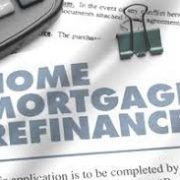Purchasing a property is often the single largest investment a person or family will make, but it can be a bewildering experience if you don’t really know what’s going on.
Having just bought my first home, I was left wishing I could find a course on “how to buy a house”, instead of having to learn by experience and blunder through with little understanding.
Some things might seem self explanatory or obvious to people who already own property, but I found there was a lot of contradictory information out there.
Here are some things I wish I knew before I started looking to buy a home.
You don’t necessarily need a 20 per cent deposit
The 20 per cent deposit is ideal.
The prospect of saving a large deposit — say $100,000 for a $500,000 property — can be daunting but lenders do provide mortgages to buyers who have saved less than one-fifth of the purchase price.
But you will have to pay for it.
Buyers with less than 20 per cent of the purchase price will often be required to pay lenders mortgage insurance (LMI) which protects the credit provider in the case the borrower cannot pay.
It can be added to your loan, but the lender can also charge you a higher interest rate.
What the expert says: Laura Higgins, senior executive leader with ASIC’s Moneysmart, said while it was not essential, the 20 per cent deposit was “absolutely preferred”.
“If you have a 20 per cent deposit that could set you up for repayments that suit you better, afford more options around the kind of mortgage you could access and is absolutely the best option,” she said.
“That doesn’t mean it’s an option for everyone; there are other ways to get entry into the housing market and make arrangements for your finances.
“I think it’s a good thing to aim for, but it is inspirational for some people, I appreciate that.”
Banks will lend you a scary amount of money. Having visited a mortgage broker early in the research phase, it became apparent some institutions would have loaned double what my partner and I could afford to repay.
The broker entered our earnings, expenses and a modest deposit amount in a program, which returned the different amounts institutions were willing to lend us.
Some were offering to lend us well over $1 million, with repayments that would have been unachievable.
It could be easy to fall into a trap where you borrow too much to buy a dream home, and then struggle to make the repayments.
What the expert says: Ms Higgins said first home buyers should fully understand their budget, and what they can afford in order to maintain the lifestyle they want.
“I think it’s probably really being honest about what you can afford because of that emotional attachment that can often come along with falling in love with a house,” she said.
“And really understanding that if you don’t want to compromise your lifestyle, or there is a certain life you want to lead, you don’t want a mortgage to be the thing that makes you unhappy.
“It’s about being realistic about what you can afford, what that looks like day-to-day with the way you live and preparing for a change.
“Interest rates go down but they also go up, so being really prepared.”
Buying a house is not just a matter of saving up a deposit and then purchasing a house.
There are a range of other costs including stamp duty, transfer fees, government fees, charges for building and pest reports, LMI and conveyancing and solicitor’s fees that can add up to thousands of dollars.
These all chip into the deposit you have saved and reduce the amount you actually can put into the purchase.
What the expert says: Ms Higgins said it was important to fully research what costs were associated with purchasing a house and ensure there were no surprises when it came time to sign on the dotted line.
“Often if you’re buying that house with someone else make sure you do that together or with friends, or speaking with family members about their experience as often that will trigger a really interesting conversation about stamp duty or how they managed those surprise expenses if they were a surprise to them,” she said.
Pre-approval is no guarantee of getting a loan
Many lenders offer a pre-approval service where they will weigh up your income, expenditure and amount of personal debt against your deposit to see if you qualify for a loan.
It gives you confidence to go ahead and make offers on properties within your budget, but it is no silver bullet.
The full loan approval only comes after the lender receives a signed contract, where they investigate and see if the property is a worthwhile investment.
What the expert says: Ms Higgins said pre-approval was good for gaining a realistic understanding of your budget.
“It’s really important at the beginning of the process so you know you’re looking at places you can afford, rather than falling in love with places and then trying to reverse engineer it to get the funding,” she said.
You need to take out insurance the day you sign the contract
After agreeing to a price with the seller, there is still a settlement period before the buyer can actually move in.
Even though it may be 30 days before you pick up the keys, you need to take out insurance on the property in the interim to protect against any damages.
The legal liability for damages varies between the states and territories, but some lenders will insist that buyers cover themselves before settlement.
It is probably wise to take the advice of your solicitor or conveyancer to learn of your position.
What the expert says: Ms Higgins said it was a good idea to protect your new big purchase.
“You need insurance when you sign up to that house, before you move in your things. You don’t want to lose that investment or be vulnerable,” she said.
Some agents prefer to sell houses via auction, but it can be a trap if you are unsure of your finances or have doubts about the building and pest reports.
In a standard conditional offer you can add a backstop, where if your finance does not get approved or the building has any issues you can pull out.
But you do not have that luxury with an auction, meaning if the reserve price is met and you win, you will have no option but to buy the property.
What the expert says: Auctions can be a trap for those who do not fully understand what they’re looking for, Ms Higgins said.
“Do your research, go to a couple of auctions and make sure the first auction you go to is not the one you’re participating in,” she said.
“It’s a lot of work to get ready to buy a house and it isn’t just about spending Saturday mornings wandering through the neighbourhood.
“It is a bit of practice as well so you can feel confident when you got to an auction you understand the conditions and what you’re signing up for and you’re prepared.”
The process can feel like a game with changing rules
Buyers and agents seem to be locked in a game of distrust where everyone is holding their cards close to their chest.
I naively thought honesty would be the best approach and was happy to discuss my budget and how much I was looking to spend.
When making an offer, I was at times told I was “in the ballpark”, only to find out the owner was looking for $50,000 more than I could pay.
Seemingly simple questions like “how much does the owner want?” were met with riddle-like responses like “the market decides the price” or “the owner has decided to go to market without a price as buyers have more information than ever and have a better handle of the value”.
While I was being honest, it took me a while to understand the agents probably believed I was not being fully truthful about my budget with them.
There appears to be little choice but to play the game, trying to slowly feel out the middle ground.
It’s also important to remember the agent works for the seller, not for you.
They will use sales tactics to try to eke out more from you to get more for the owner, and ultimately for themselves in commission.
What the expert says: Ms Higgins said buyers needed to make use of the vast volume of information online to gauge prices, and sift through all the mixed messages.
“I think we can understand the shape of the neighbourhood so much more easily, so again it’s about doing your research,” she said.
“If you’re interested in a house you can get to know that real estate agent’s properties, what they’ve told people and then what they sell for, and how closely they are aligned, or how far off they are.
“It is a lot of work, and it can be a really great fun project, but it does take time and lots of research.
“Ask lots of questions and really invest in the process.”
When it comes to owning property many people around the world will tell you that this is a lifelong dream. While once an opportunity that seemed to be reserved for either the wealthiest or the most miserly among the general population home ownership is now something that is accessible to a larger segment of the population than ever before.
This is good news for many but for some can lead to confusing encounters with mortgage brokers and serious sharks along the way. The best advice that anyone can give someone attempting to embrace the dream of real estate ownership is to deal with a reputable company when it comes to obtaining a mortgage. Even when dealing with reputable lending companies you must watch out for those who do not have your best interest at heart.
If you would like some very practical advice when it comes to getting a mortgage, then you are at the right place. First of all, avoid lenders that are encouraging you to take a loan for more money than you are comfortable repaying. Foreclosures are at a record high when it comes to the mortgage industry at the moment because of predatory lending practice on behalf of some mortgage brokers. These practices include convincing people to borrow more money than they could realistically hope to pay over time and have any quality of life as well as convincing homebuyers to take out adjustable rate mortgages in the beginning in order to procure lower rates.
Shop around before you decide to buy when it comes to mortgages. This doesn’t mean to actually apply for mortgages all over town but do the research and compare rates before applying with any one company. Talk to several different brokers and find out what they have to offer you that the other company down the road cannot or will not offer. Keep in mind that mortgage companies will offer everything under the sun from free toasters to free vacations in order to get you to go with their company. The proof is in the terms however. It is simply not worth that free toaster if you are going to end up paying a 6.9% interest rate instead of a 5.9% rate. You will have paid for that toaster many times over in the process of paying the mortgage.
Even after you’ve applied for a mortgage, if the deal seems to be going south check out your other options. There are all kinds of problems that crop up along the way. You are not marrying the mortgage broker. Nine times out of ten you aren’t even making any sort of commitment at all to your mortgage broker. You will however be living in the house you select. If there is a problem with the mortgage company for the specific home you want do not hesitate to change in order to get the home you desire for your family rather than allowing the mortgage company to dictate what kind of home you can buy.
I mention this because we had a very similar problem when we purchased our turn of the century home. The mortgage company didn’t think the home was worth the risk because of its age. We saw the beauty and the potential in our home that is coming along quite nicely and managed to be approved and financed in short order with another mortgage company. If this was the case in our situation, chances are that it will work for others as well.
In all honesty, it is nearly impossible to buy a home in this day and age without taking out a mortgage. It is best however if you see the process as a learning experience rather than an abject lesson in intimidation. This is your home and your money that will be spent in order to purchase the home. You are asking them for a loan but quite frankly, they need your business. Do not hesitate to shop around for the best deal with a mortgage just as you did when finding your home.
PROFESSIONAL MORTGAGE BROKER KENWICK
TRUSTED LOCAL REAL ESTATE AGENT













